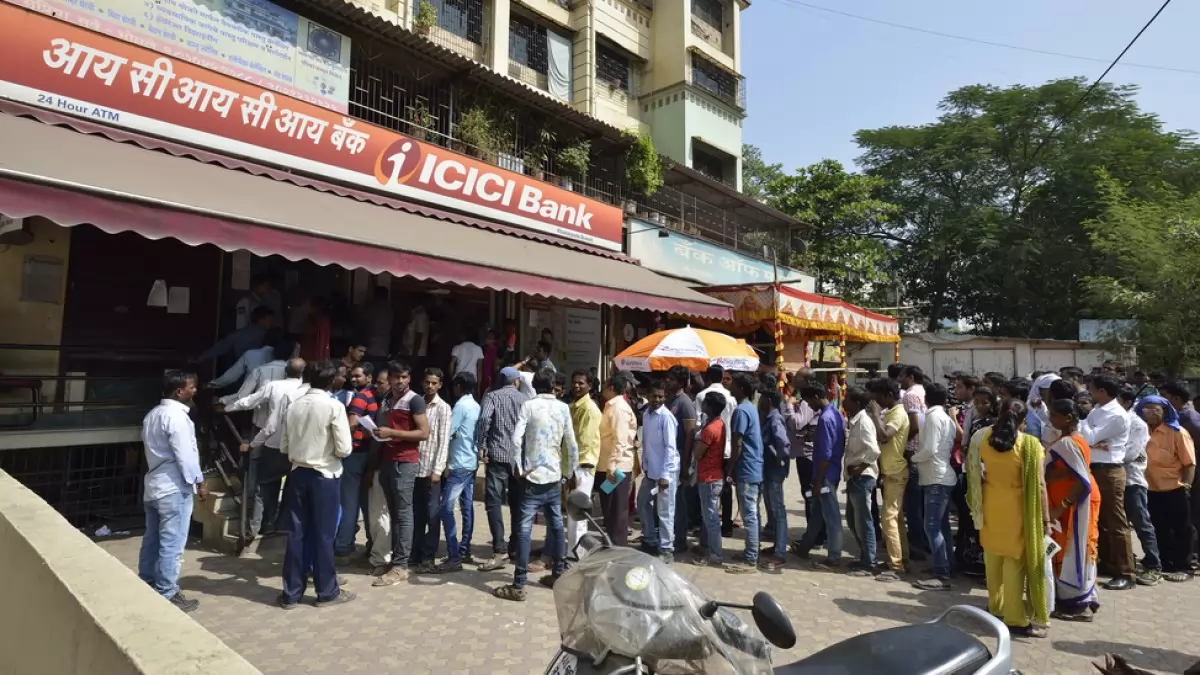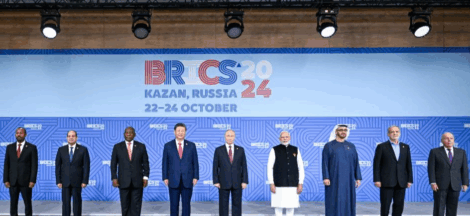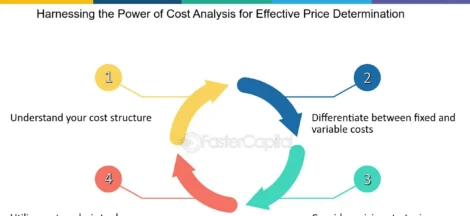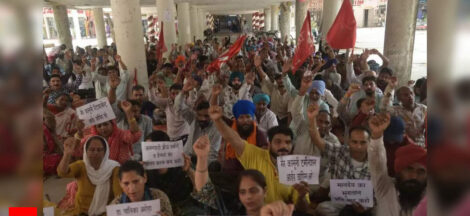By Dr. Gyan Pathak
November 8, is the sixth anniversary of Demonetisation, and yet the Indian economy is haunted by black money, counterfeit notes, and cash-economy. The decision of a five-judge bench hearing a bunch of petitions regarding Modi’s decision of Demonetisation to further examine the 2016 move has therefore greater relevance than we presume, especially when Attorney General R Venkataramani and Solicitor General Tushar Mehta repeatedly asserted that the issue has become academic in view of passage of 6 years after the decision.
PM Narendra Modi’s decision of Demonetisation was announced on November 8, 2016 at 8PM in the national television and radio which said that all Rs500 and Rs1000 banknotes would become invalid at the stroke of midnight. It had devastating impact on the Indian economy and livelihood of the people. Apart from that hundreds of people lost their lives in queues while they were trying to withdraw their own money.
The three economic objectives forwarded were – wiping out of black money, eradicating fake currency notes and creating cashless economy. However, demonetization miserably failed in all the three objectives. Reserve Bank of India data show that almost entire banknotes (over 99 per cent) returned into the banking system. Banking system received Rs15.31 lakh crore as against Rs15.71 lakh crore which was invalidated.
The then Finance Minister Piyush Goyal in February 2019 told the Parliament that Rs 1.3 lakh crore black money were recovered through various anti-black money measures. However, he did not disclosed how much black money was recovered through demonetization. Obviously, the government had nothing much to tell the country, however, they had expected to recover at least Rs 3-4 lakh crore black money.
As against this surge in black money continued, though nobody knows how much, since no official estimate has been disclosed. However, we media reports suggest great accumulation of black money. Income Tax department has recent detected Rs 150 crore black money in Haryana and Delhi-NCR after conducting raids on several businesses including hospitals, and Rs 250 crore in Tamil Nadu.
As for the counterfeit notes in circulation, Modi government had said that they would be washed out by the demonetization move. However, the Latest RBI annual report of this year mentions that counterfeit Indian currency notes increased by 10.7 per cent in the financial year 2021-22 ending on March 31, 2022. It revealed that there was 101.93 per cent rise in fake notes of denomination Rs500. The counterfeit notes of Rs 2000 increase by more than 54 per cent, it was reported.
Moreover, there was an increase of 16.45 and 16.48 percent in counterfeit notes of Rs 10 and Rs 20, respectively in 2021-22. Fake Rs 200 notes rose 11.7 percent. Counterfeit notes detected in denominations of Rs 50 and Rs 100 declined 28.65 and 16.71 percent, respectively, the report showed. Of those, 6.9 percent were detected at the RBI with the rest 93.1 percent at other banks.
It should be worth noting that when demonetisation was announced in 2016, the government agencies had seized 6.32 lakh counterfeit notes. However, RBI data shows that a total of 18.87 lakh counterfeit notes were seized across the country in the next four years which included all denominations.
Modi government’s third objective was creation of cashless economy through promoting digital transaction. There is no doubt that digital transactions have tremendously increased. UPI transaction touched a new high of Rs12.11 lakh crore in October 2022. However, cash transaction remains dominant. Currency with public have tremendously risen from Rs17.7 lakh crore just before implementation of demonetisation to Rs30.88 lakh crore in October 2022. It means currency in public circulation is 71.84 per cent higher than just before announcement of demonetisation in 2016.
Thus on the one hand, demonetisation miserably failed in all the three economic objectives, it had unprecedented impact on the economy and brought great hardship on people. A total of 58 petitions were filed against the demonetisation order is being heard in the Supreme Court of India, which has refused to accept the AG’s and SG’s argument that the issue has become an academic one after six years of implementation. Senior Advocated P Chidambaram and Shyam Divan contended that the validity of the Government’s decision was still open to challenge.
After hearing the arguments of the petitioner, the court had asked the Union of India and the Reserve Bank of India to file a comprehensive affidavit in response to the petitioners’ arguments, especially the one that Section 26 (2) of the RBI Act does not authorize the Union to completely cancel currency notes of particular denominations. The petitioners argued that this section only empower the Centre to cancel currency notes of a particular series and not the entire currency notes.
The bench has said on October 12 that it wants to see the documents relating to the RBI Board meetings ahead of the announcement of the demonetisation. On September 28, the court had observed that it will first examine whether the petitions challenging demonetisation have become academic. It had also said that the issue may not have become academic. The bench has also said that it has the duty to answer the issues referred to it by the Constitution Bench and that it has to answer them “one way or the other for posterity”. (IPA Service)




 BJP Is Quite Nervous In Himachal Before The Assembly Polls On November 12
BJP Is Quite Nervous In Himachal Before The Assembly Polls On November 12 